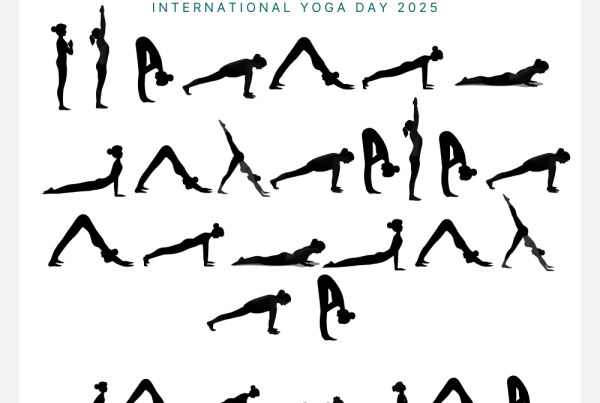
A deeper understanding of yoga came into play long before fancy yoga gear and pretty Instagram photos attracted students to the practice. Some students will even admit that the cute outfits and celebrity praise from stars like Gweneth Paltrow and Jennifer Aniston guided them towards experiencing yoga (Gweneth once credited herself to popularizing the practice). Still, ancient yogis had a different meaning to yoga aside from the asanas and breathing techniques taught in class—a method that they encompassed into their lifestyles outside of the studio: the Yoga Sutras.
The Yoga Sutras dates back nearly 4,000 years but still applies to modern-day living. The sutras focus on the eight limbs of yoga, guiding towards living a more peaceful and fulfilling life. As explained in the first two limbs, yamas and niyamas, yogis can navigate your daily lives more purposefully, transforming how you view the world. You can improve your social interactions, kindness towards yourself and others, among other pathways to becoming a better human being. And there’s no better moment to put the sutras into practice than now, as September 5th is International Charity Day. Below are some charitable ways you can practice yoga sutras and embody the true yogic lifestyle.
Ahimsa
Ahimsa is the Sanskrit word meaning non-violence or non-harming. It’s about separating yourself from the anger or aggression that may arise in certain situations. A charitable way to tap into this Yoga Sutra would be to extend kindness toward others and be more accepting of those you encounter. For instance, holding the door open for someone would be a nice gesture that demonstrates ahimsa. Instead of being annoyed that they are making you late, you can choose to refrain from negative thinking and introduce a more balanced approach.
Satya
Truthfulness exhibits the satya sutra. Upholding honesty in your interactions alleviates much of the burden you put on yourself, as well as helps you form authentic relationships. By filtering your words, you’re preventing hurting others with unwanted thoughts or opinions. Consider this sutra in all of your conversations to ensure that you showcase yourself in a trustworthy light.
Asteya
Asteya, in modern-day terms, means non-stealing, which sounds much easier than it is for many. This sutra is more than promising not to steal money or goods that don’t belong to you but can also translate to consuming someone else’s time, energy or burdening them with work. Many of us learn to work hard for our money and possessions from birth, but asteya takes it a step further, making yogis aware of other things you do that may be taking advantage of others. Think about this sutra next time you request to leave the office early or keep an employee past their shift’s end while they help you with your order. You could be stealing from them without even realizing it.
Brahmacharya
Also known as the conservation of energy, brahmacharya focuses on avoiding things that unsettle the mind and body. It’s often referring to sexual activity, which depletes both your mental and physical energy, but the practice suggests that other acts could violate this sutra. Examples would be consuming loud music or violent movies. Noticing what you are taking in and how you exert your body emotionally will keep you in line with this sutra.
Aparigraha
Many of us are probably guilty of breaching aparigraha. Otherwise defined as non-grasping, aparigraha is a form of hoarding through greediness and always wanting more than you have. Societal pressures encourage this type of thinking, reminding us of the powers that an abundance of money or material items bring to our lives. However, pulling back on your impulse buys and feeling grateful for what you have at the moment is a way to practice this sutra and is a pretty charitable way to live.
Saucha
Kicking off the niyamas is the saucha sutra, which emphasizes purity. The intention is to keep the space around you clean and organized and purify your thoughts manifesting inside. Try adopting this sutra by introducing meditation into your daily routine to rid your mind of anxious thoughts and establish more clarity.
Santosha
If you are content with what life has to offer you, you are already following the sutra, santosha. On the mat, this sutra teaches you to accept that where you are may be different from the day before or after—feeling satisfied with your progress in a pose rather than beating yourself up for your abilities. Finding comfort in where you are in all facets of your life allows you to release the need for perfection in all that you do.
Tapas
When igniting the tapas sutra, you have the desire and willingness to do more. You are committed to whatever the task is at hand, whether it relates to the changes in your physical being or how you treat others. Fueling your body with good nutrients and exercise, or even devoting much of your energy to your yoga practice, is a charitable action that embodies the tapas sutra. Target the contents of your life that could require more of your attention.
Svadhyaya
In yoga classes, instructors often encourage their students to notice how they are feeling without judgment – witnessing the thoughts and feelings that appear without trying to change or manipulate them in any way. This exercise is a sense of svadhyaya. It’s a form of self-observation where you study your perspective to gain insight into specific parts of yourself. This practice also enables you to see compassion for others as you observe yourself outside looking in.
Ishvara Pranidhana
The final niyama of the Yoga Sutras is Ishvara Pranidhana: one of devotion to a higher power. Asking yourself what God or a person of a greater essence would want you to do in a situation—thinking about a circumstance outside of yourself and what would be the best course of action for everyone involved. Practicing this sutra may help you find the comfort and mental clarity that you need.










